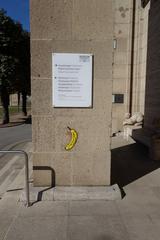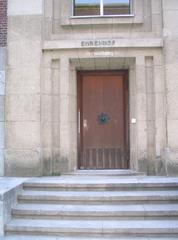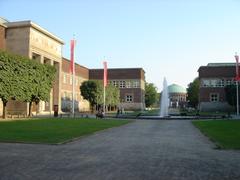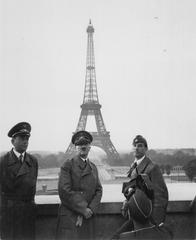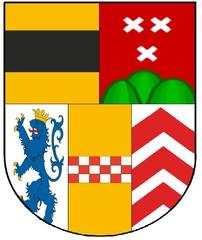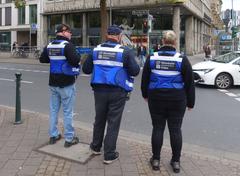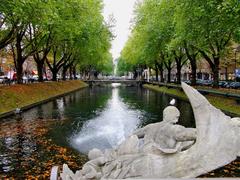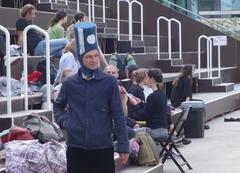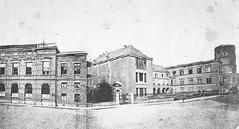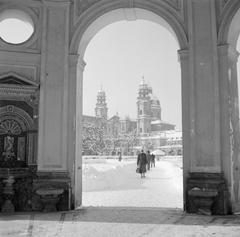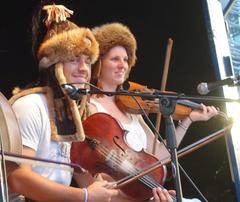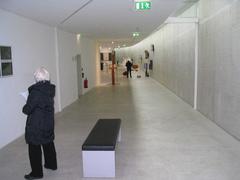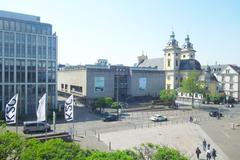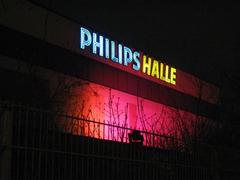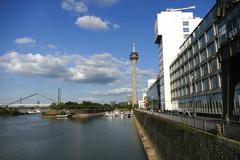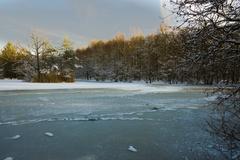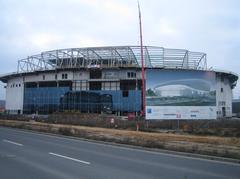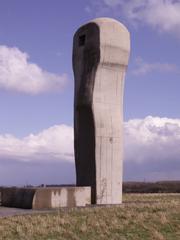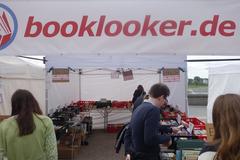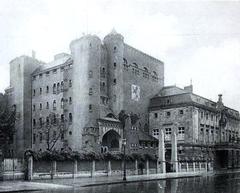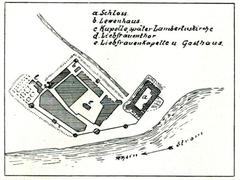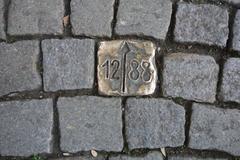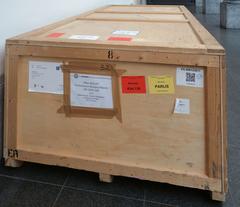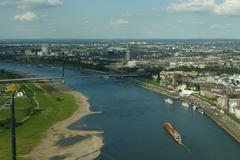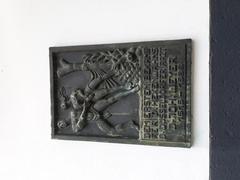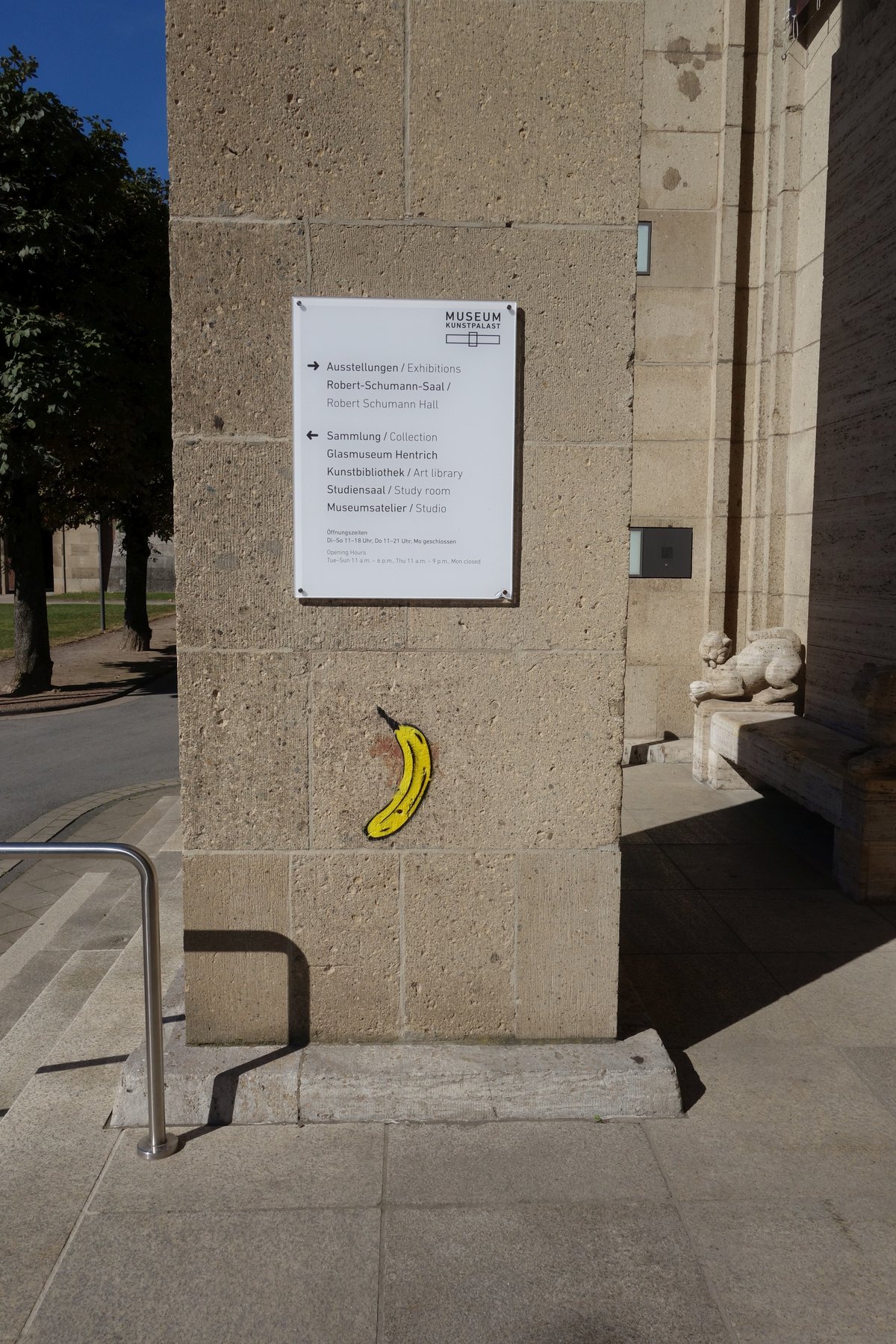
Visiting Hours and Ticket Information for Museum Kunstpalast, Düsseldorf, Germany
Date: 16/08/2024
Introduction
The Museum Kunstpalast in Düsseldorf, Germany, stands as a beacon of cultural heritage and artistic expression, offering visitors a rich tapestry of historical, modern, and contemporary art. Established in 1913, the museum’s roots trace back to the patronage of Elector Johann Wilhelm von der Pfalz in the late 17th century, who laid the groundwork for one of the first quasi-public European painting galleries (Google Arts & Culture). Today, Museum Kunstpalast serves as a testament to Düsseldorf’s long-standing commitment to the arts, boasting an extensive collection that spans from the Renaissance to modern installations. This guide provides a comprehensive overview of what visitors can expect, from the museum’s historical significance and architectural evolution to practical visitor information, including ticket prices, opening hours, and travel tips. Whether you’re an art enthusiast or a casual visitor, Museum Kunstpalast offers an enriching experience that bridges the past and present in the heart of Düsseldorf.
History of Museum Kunstpalast
Origins and Early Development
The history of the Museum Kunstpalast in Düsseldorf is deeply intertwined with the cultural and artistic patronage of Elector Johann Wilhelm von der Pfalz (1658-1716). Johann Wilhelm, also known as Jan Wellem, was a significant figure in the promotion of the arts in Europe. His efforts led to the establishment of one of the first quasi-public European painting galleries, laying the foundation for what would eventually become the Kunstpalast. This early gallery was a testament to the Elector’s dedication to the arts and his vision of making art accessible to the public (Google Arts & Culture).
Transition to a Municipal Art Museum
The Kunstpalast underwent significant changes over the centuries. From its initial establishment as a private collection, it transitioned into a Municipal Art Museum. This transformation marked a pivotal moment in the museum’s history, as it became more integrated into the public sphere. The Municipal Art Museum played a crucial role in preserving and showcasing the rich artistic heritage of Düsseldorf and the broader Rhineland region (Kunstpalast).
Public-Private Partnership and Modern Era
In 2001, the Kunstpalast reopened as the first public-private partnership in Germany in the field of museums. This innovative model involved collaboration between the City of Düsseldorf and several prominent corporate partners, including E.ON AG (formerly VEBA AG), the Metro Group, and Degussa. This partnership allowed for significant investments in the museum’s infrastructure and collections, ensuring its continued growth and relevance in the 21st century (Google Arts & Culture).
Architectural Evolution
The physical structure of the Kunstpalast has also evolved over time. The museum’s current building, located at Ehrenhof 4-5, is a modern architectural marvel that spans an impressive 5,500 square meters. This expansive space allows the Kunstpalast to house its diverse collections, which include paintings, sculptures, graphic works, glass, crafts, and new media. The architectural design of the museum is a reflection of its commitment to providing a comprehensive and immersive experience for visitors (Kunstpalast).
Notable Collections and Exhibitions
The Kunstpalast is renowned for its extensive and varied collections. One of the most historically significant departments is the collection of European paintings, which spans from the 15th to the 20th century. This collection traces its roots back to the late 17th-century gallery of paintings held by Elector Palatine Johann Wilhelm von der Pfalz. Today, it comprises around 3,000 works, including masterpieces from the Renaissance through to Impressionism. Notable works in this collection include pieces by Eduard Bendemann, Bernardo Bellotto, Theodor Hildebrandt, Giovanni Bellini, Carl Gustav Carus, Lovis Corinth, and Lucas Cranach the Elder (Kunstpalast).
Artist Rooms and Contemporary Art
In addition to its historical collections, the Kunstpalast also features artist rooms designed by the artists themselves. These rooms offer a unique and intimate glimpse into the creative processes of renowned artists. Notable examples include Nam June Paik’s multimonitor installation “Fish Flies on Sky” (1983–1985) and the ZERO-Lichtraum, a collaborative work by Heinz Mack, Otto Piene, and Günter Uecker. The museum also houses contemporary installations such as Thomas Schütte’s “Furniture for ‘One Man Houses’” (2005) and Stephan Balkenhol’s “Large Head with Small Man” (2010) (Google Arts & Culture).
Cultural Significance and Impact
The Kunstpalast holds a significant place in the cultural landscape of Düsseldorf and the broader Rhineland region. Its diverse collections and innovative exhibitions have made it a hub for artistic expression and cultural exchange. The museum’s commitment to juxtaposing old masters with modern iconoclasts and non-Western works has led to paradigm-shifting presentations that reveal unexpected connections between different artistic eras and trends (Lonely Planet).
Visitor Experience and Engagement
The Kunstpalast is dedicated to providing an engaging and educational experience for its visitors. The museum offers a range of programs and activities, including guided tours, workshops, and lectures. It also hosts concerts in the grand Robert Schumann Saal music hall, further enriching the cultural experience for visitors. The museum’s commitment to accessibility is evident in its efforts to accommodate diverse audiences, including children and young people, who can visit the museum for free (Kunstpalast).
Visitor Information
Visiting Hours and Tickets
Museum Kunstpalast is open from Tuesday to Sunday, from 11:00 AM to 6:00 PM. It remains closed on Mondays. Visitors can purchase tickets at the museum or online through the official Museum Kunstpalast website. General admission is €12, with reduced rates for students and seniors. Children and young people under 18 can visit for free.
Guided Tours and Special Events
The museum offers guided tours in multiple languages, providing deeper insights into its collections and exhibitions. Special events, including temporary exhibitions and cultural programs, are frequently held, so visitors are encouraged to check the Museum Kunstpalast website for the latest updates.
Accessibility
Museum Kunstpalast is committed to being accessible to all visitors. The museum provides facilities for wheelchair users, including ramps and elevators. There are also audio guides and tactile exhibits available for visually impaired visitors.
Nearby Attractions
Located in the heart of Düsseldorf, Museum Kunstpalast is surrounded by several other noteworthy attractions. Visitors can explore the historic Old Town (Altstadt), the Rheinturm (Rhine Tower), and the modern architecture of the MedienHafen district.
Travel Tips
Museum Kunstpalast is easily accessible by public transportation. Visitors can take the U-Bahn (subway) to the Heinrich-Heine-Allee station, which is within walking distance of the museum. Parking is also available for those traveling by car.
Photographic Spots
The museum itself offers several picturesque spots, including its modern architectural design and the surrounding Ehrenhof complex. Inside, visitors can capture the stunning displays of art and unique installations.
Frequently Asked Questions (FAQ)
What are the visiting hours of Museum Kunstpalast?
Museum Kunstpalast is open from Tuesday to Sunday, from 11:00 AM to 6:00 PM. It is closed on Mondays.
How much are tickets for Museum Kunstpalast?
General admission is €12, with reduced rates available for students and seniors. Children and young people under 18 can visit for free.
Are there guided tours available?
Yes, the museum offers guided tours in multiple languages. Visitors can check the museum’s website for more information and to book a tour.
Is Museum Kunstpalast accessible?
Yes, the museum provides facilities for wheelchair users, including ramps and elevators. Audio guides and tactile exhibits are available for visually impaired visitors.
What nearby attractions can I visit?
Nearby attractions include Düsseldorf’s Old Town (Altstadt), the Rheinturm (Rhine Tower), and the MedienHafen district.
Conclusion
The Museum Kunstpalast in Düsseldorf stands as a testament to the enduring legacy of artistic patronage and cultural preservation. From its origins under Elector Johann Wilhelm von der Pfalz to its modern incarnation as a public-private partnership, the Kunstpalast has continually evolved to meet the changing needs of its audience. Its diverse collections, innovative exhibitions, and commitment to accessibility make it a vital cultural institution in the heart of Düsseldorf. For those seeking to explore the rich artistic heritage of the Rhineland, the Kunstpalast offers an unparalleled experience that bridges the past and the present (Google Arts & Culture).
To stay updated on the latest events and exhibitions at Museum Kunstpalast, consider downloading the Audiala mobile app, checking out related posts on our website, or following us on social media.
